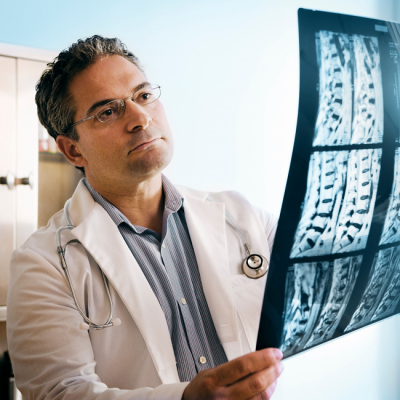Non-Surgical Herniated Disc Treatment in Santa Fe

For people living with herniated discs in Santa Fe, NM it can be life altering and seemingly impossible to deal with. While the intervertebral disc is a common culprit in spine related health problems, its function is widely misunderstood.
The disc is a small cartilage pad that is situated between the spinal bones. The soft jelly-like center is contained by layers of fibrous tissues. Each disc serves as a connector, spacer and shock absorber for the spine. When healthy, discs allow normal, pain-free turning and bending. Since spinal discs have a very poor blood supply, they depend upon the circulation of joint fluids to bring in nutrients and expel waste. If a spinal joint loses its normal motion due to vertebral subluxations, and this pumping action is impaired, the health of the disc deteriorates. Like a wet sponge, a healthy disc is flexible. A dry sponge is hard, stiff and can crack easily. This is how many disc problems begin.
Because of the way each disc is attached to the vertebra above and below it, a disc cannot ‘slip’ as commonly thought. However, trauma, injury to the spine and degenerative changes associated with vertebral subluxations can cause discs to bulge, herniate, or worse, rupture. This can be quite painful, putting pressure on the spinal cord and nerve roots that exit out between each spinal vertebra.
Disc Tear: The most common disc injury is a small crack or microtear in the tough, outer cartilage material of the disc called the annular fibers. This allows the fluid to start leaking out, and the disc begins to wear thin.
Bulging Disc: The soft jelly-like material in the middle of the disc pushes to one side, forward or backward, and swelling occurs. This nucleus is still contained within the tough outer fibers of the disc, but can still cause pressure and painful symptoms.
Herniated Disc: The soft jelly-like material from the nucleus in the middle of the disc ruptures through the tough outer fibers and extends to the outer edge or beyond the normal limits of the disc causing compression onto the spinal nerve root.
Prolapsed Disc: A piece of disc material separates away and becomes a fragment or a free-floating piece.
Desiccated Disc: The disc loses its fluid content and degenerates down to a rough, worn-down or worn-out appearance. This occurs as the bones begin to fuse to each other in the body’s attempt to shore-up the unstable spinal joint.
Many patients searching for a chiropractor in Santa Fe have avoided needless surgery or dependency on pain pills by choosing care at our office.
